Denon DJ dropped the much-anticipated update to their Engine Prime track management suite and Engine OS earlier last month. Filled with a host of new features and improvements, this could be a must-have for many DJs. With its release, we decided to test it out for ourselves.
Is it worth updating? After some extended time, DJ Soo gives his thoughts on the app and OS update.
I won’t reiterate the feature-list described in the announcement piece that we published earlier, and I won’t bore you with a play-by-play description of each new feature. Instead, let’s dive straight into the pros and cons of these releases.
Note: this was tested on an SC6000, an SC6000M, and a Prime GO.
Dropbox Support
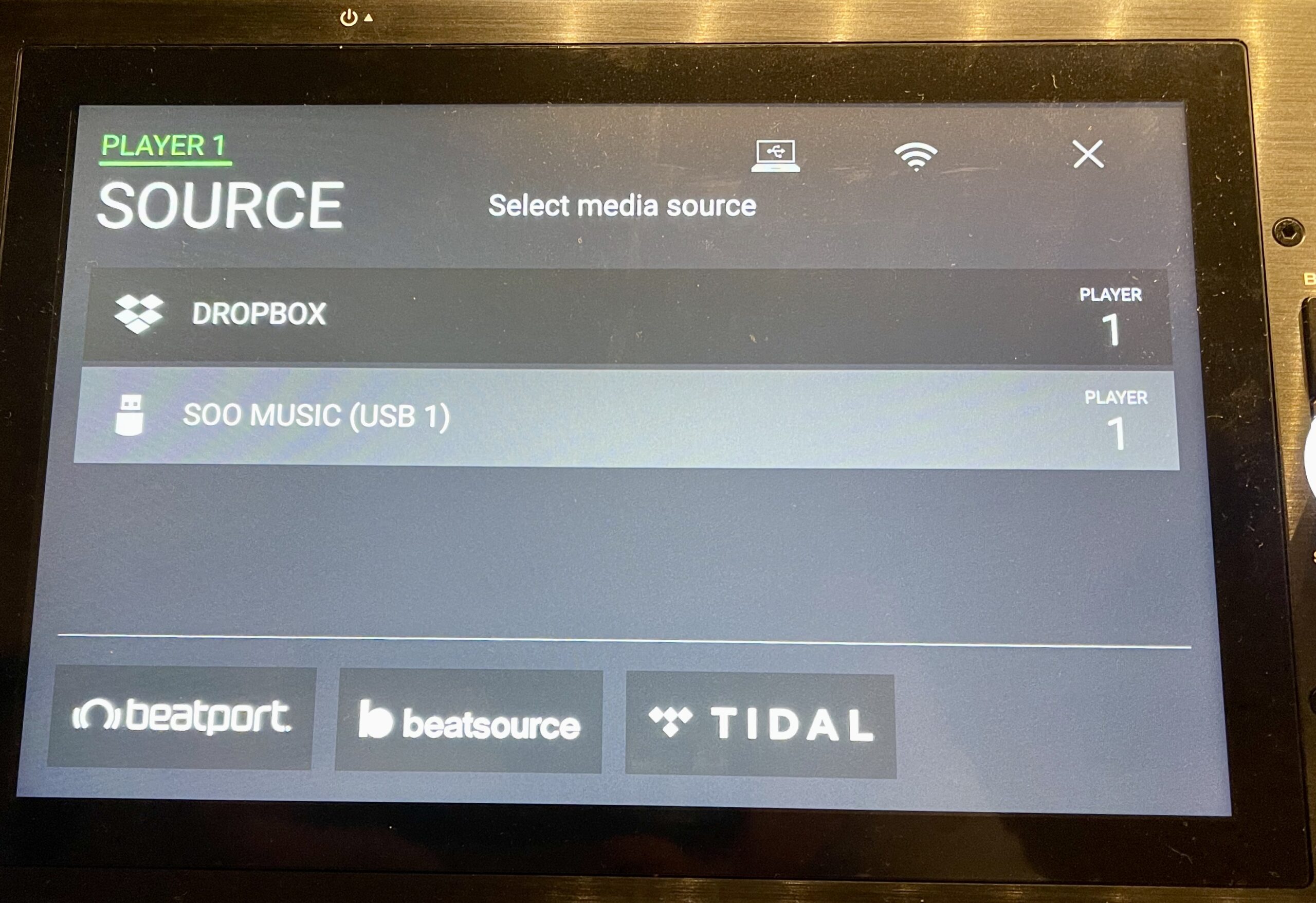
Let’s start with the new Dropbox feature. This is one of the more exciting developments for the Engine Prime ecosystem in recent memory. Allowing users to store and access files directly from Dropbox is a potential game-changer for many.
The Pros
It works as advertised
Dropbox streaming works and does what it sets out to do. It functions almost identically to having a USB drive connected with all the features available. The big difference is all the tracks are up on the cloud instead of on a drive. The only significant difference in the UX is the wait for a track download and the longer load times. I did notice some quirks that may need some fixes, but we’ll get into that later.
Your whole collection is at your fingertips

As a primarily-laptop DJ, my biggest issue with standalone gear is deciding what tracks to put on my drive. As a track hoarder, there’s always that nagging feeling that I forgot something. Maybe it’s that massive banger or that often-needed request when exporting my USB drive. With the new Dropbox integration, I can have my entire library accessible via WiFi . This feature is fantastic for the type of DJ that likes to have their whole collection available. Mobile DJs, club DJs, and any DJs that deal with a diverse crowd will benefit from this functionality.
You own all the tracks
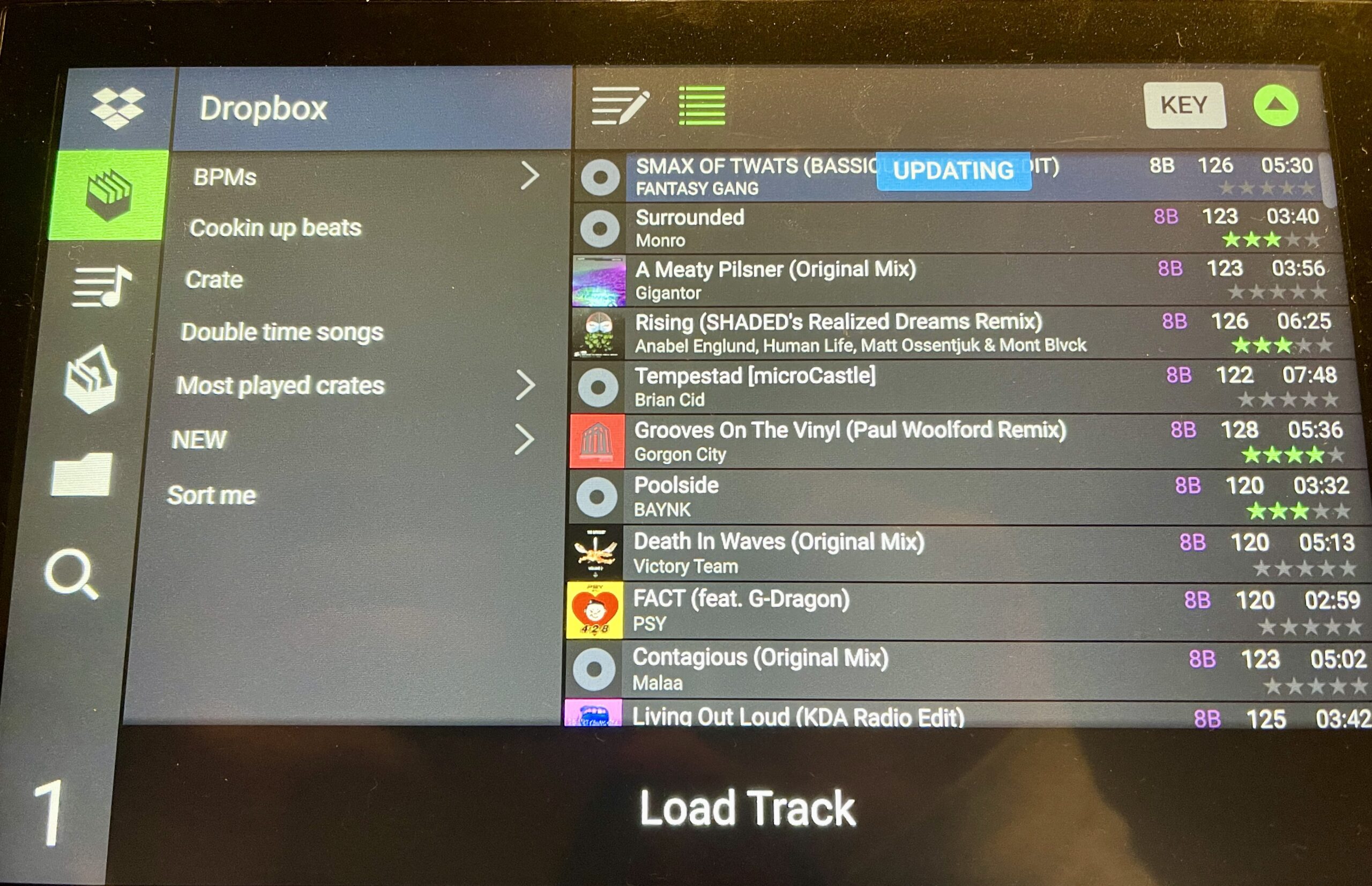
I have never been the biggest proponent of streaming services for DJing. To me, streaming services are essentially music rental services. I remember the day that Pulselocker unceremoniously shut down. They only gave their users a single day of warning before ending access to their music (on a Friday, no less), leaving quite a few DJs scrambling. Spotify pulling out of the DJ game entirely last summer was another reminder about how streaming services can revoke access at a moment’s notice.
Dropbox streaming is different – this is entirely the music that you own.
You can analyze your tracks ahead of time
The tracks are analyzed and set up ahead of time. They maintain the proper metadata and organization structure you’ve worked hard to set up. Any cues, loops, or beat grid adjustments will transfer to the Dropbox folder
In comparison, services like Tidal or Soundcloud Go cannot batch-analyze any tracks ahead of time. As a result, analysis, beatgrids, cues, and loops must be set up on the fly, adding time to the track loading process. Once set up, this data saves to your USB drive, but it still must be done individually on a track-by-track basis.
Streaming from Dropbox is a much more elegant experience.
The Cons – and improvements we’d like to see:
Changes don’t sync back up to the cloud
As of now, cues and loops added, beat grids, new playlists, and any editing done on the hardware do not save back to the Dropbox folder. This would serve as a powerful tool in syncing up remote libraries in terms of playlists and saved data like cues and beat grids. Creating playlists directly on the player and having that playlist show up on your Engine Prime app would be incredible.
While waiting for this functionality, Mix Master G has figured out a workaround to sync changes back to Dropbox using his Denon Conversion Utility. However, the process seems a little cumbersome and is still only available to Mac users.
No ethernet link support
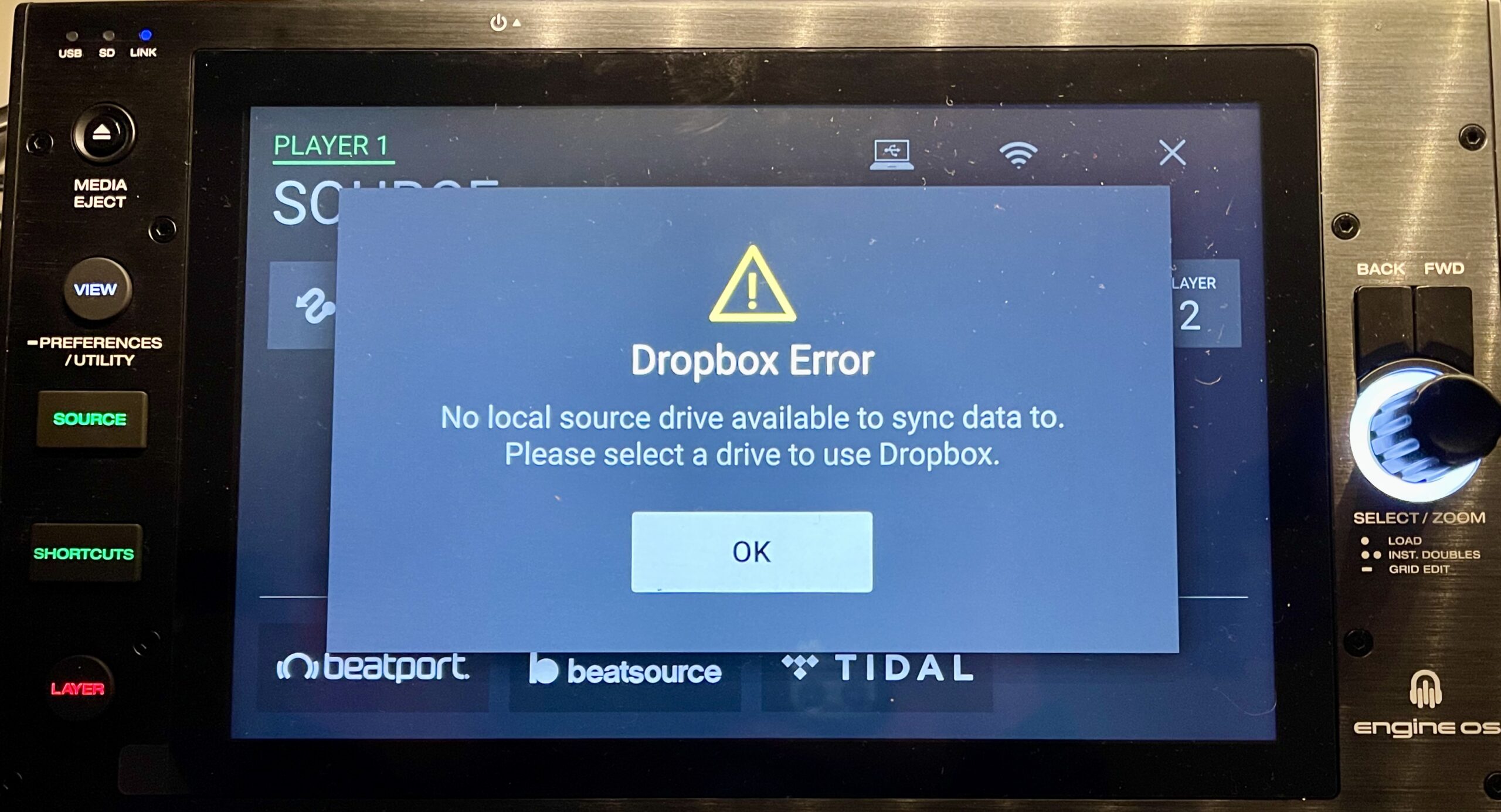
Currently, the ethernet link does not work when using Dropbox streaming. When using a pair of devices, each player requires a separate USB drive to access Dropbox.
This is because Dropbox functionality requires a USB drive to save any cue and analysis performed on the players themselves. Hopefully, Denon DJ will allow the linked player to access the USB drive in the first player rather than requiring a 2nd USB key soon.
Dropbox files must copy to a new Dropbox directory
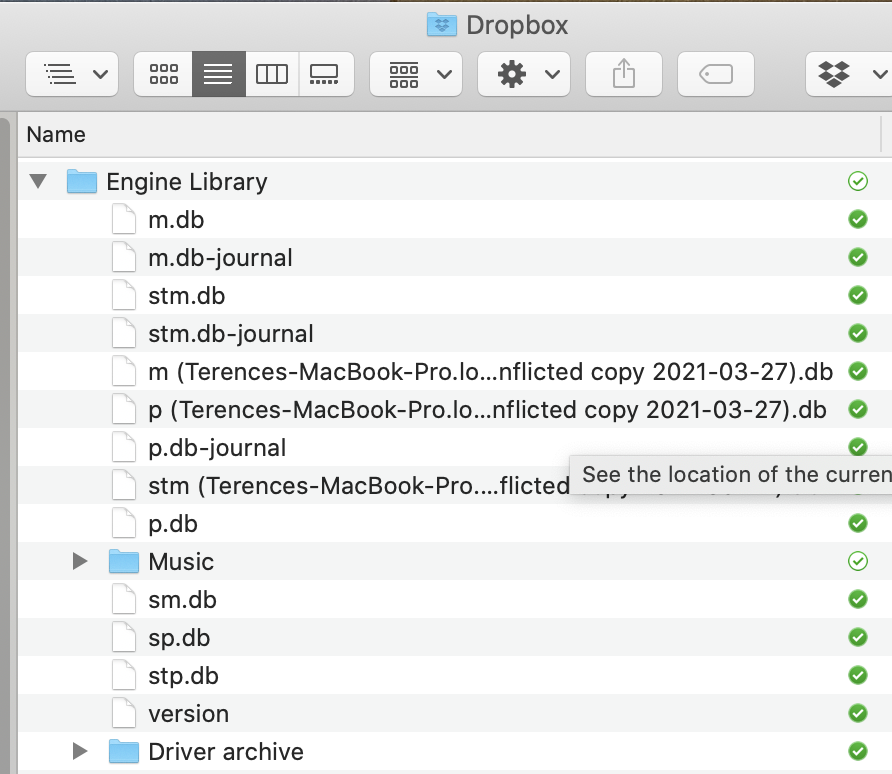
Right now, there is no way to build a collection based on existing files located in your Dropbox. You must export your collection from Engine Prime into a specific directory. As someone who already has my entire collection saved to Dropbox, I would love to access my existing folder structure in Engine Prime rather than copying all my files for use in Dropbox.
Yet another subscription service

I have been a Dropbox subscriber for years now, so I have no issues carving out some space for Engine Prime on my account. For other DJs, using this feature requires yet another monthly payment in a growing list of services.
Cannot see USB and Dropbox libraries simultaneously on the same player
Much like using Tidal or Beatport Link, you can only set one service at a time and cannot have both your USB library and your Dropbox library loaded simultaneously. You can have a different service set up on a linked player, though.
Additional features we’d like to see
While the core functionality of Dropbox streaming is all very functional, the current implementation only scratches the surface of its potential. With that, here are some ideas for features we’d love to see moving forward.
More comprehensive library syncing
Currently, Dropbox access feels very much like using Dropbox as a remote USB drive rather than a robust library management tool. Your primary collection still benefits from staying local and being managed separately. The current design works best if the Dropbox streaming library is kept separate from your existing collection.
While it is possible to manage your collection primarily from Dropbox, you will end up overwriting a lot of metadata and folder structure due to the export nature of Engine Prime. For instance, creating that new directory would reset all my “date added” fields. It would also override all my custom folder structures. For someone who has managed the same digital library for 14 years, this is unacceptable for my scenario, so I’m stuck maintaining two separate collections if I want to use Dropbox streaming.
Downloading tracks from the cloud directly to USB/drive
Saving a file from Dropbox to a USB drive would be a great library management tool. I could dump a bunch of new tracks onto my Dropbox via Engine Prime, have a good mix and audition session, and select the ones I like enough to save to my USB Drive direct within the hardware. It would be much easier than having to note the tracks I want. I would then have to export those tracks manually if I wanted them on my drive.
Mobile app
One of the big draws of using the Rekordbox 6 cloud syncing service is the ability to manage, tag, and edit your library on your mobile device. Having an Engine Prime mobile app so we can edit cues, loops, and beatgrids from your phone would be incredible. It would require Denon DJ to create more robust cloud-based library management tools, of course.
Dual Waveform View

The Pros
Overall features
I very much enjoy the stacked waveforms. Horizontal, stacked waveforms are my preferred view in Serato, and it works nicely on the Denon Prime players. This view was always available on their all-in-ones, but having it in the media players is excellent. This is a massive boon to four-deck DJing since all four waveforms are visible at once. As someone who often plays off a single deck, it’s also handy for those situations. I would assume it will also be amazing to use with the unannounced sub-controller – whenever that becomes available.
The Cons – and improvements we’d like to see
Waveforms don’t stack across players
The stacked waveforms are only for tracks playing off the same player. If you link two players via ethernet, there’s no way to view stacked waveforms showing tracks from separate players. It would be great to see stacked waveforms even using just a pair of players playing two decks. Maybe the stacked waveforms could be mirrored on both decks.
Serato Integration
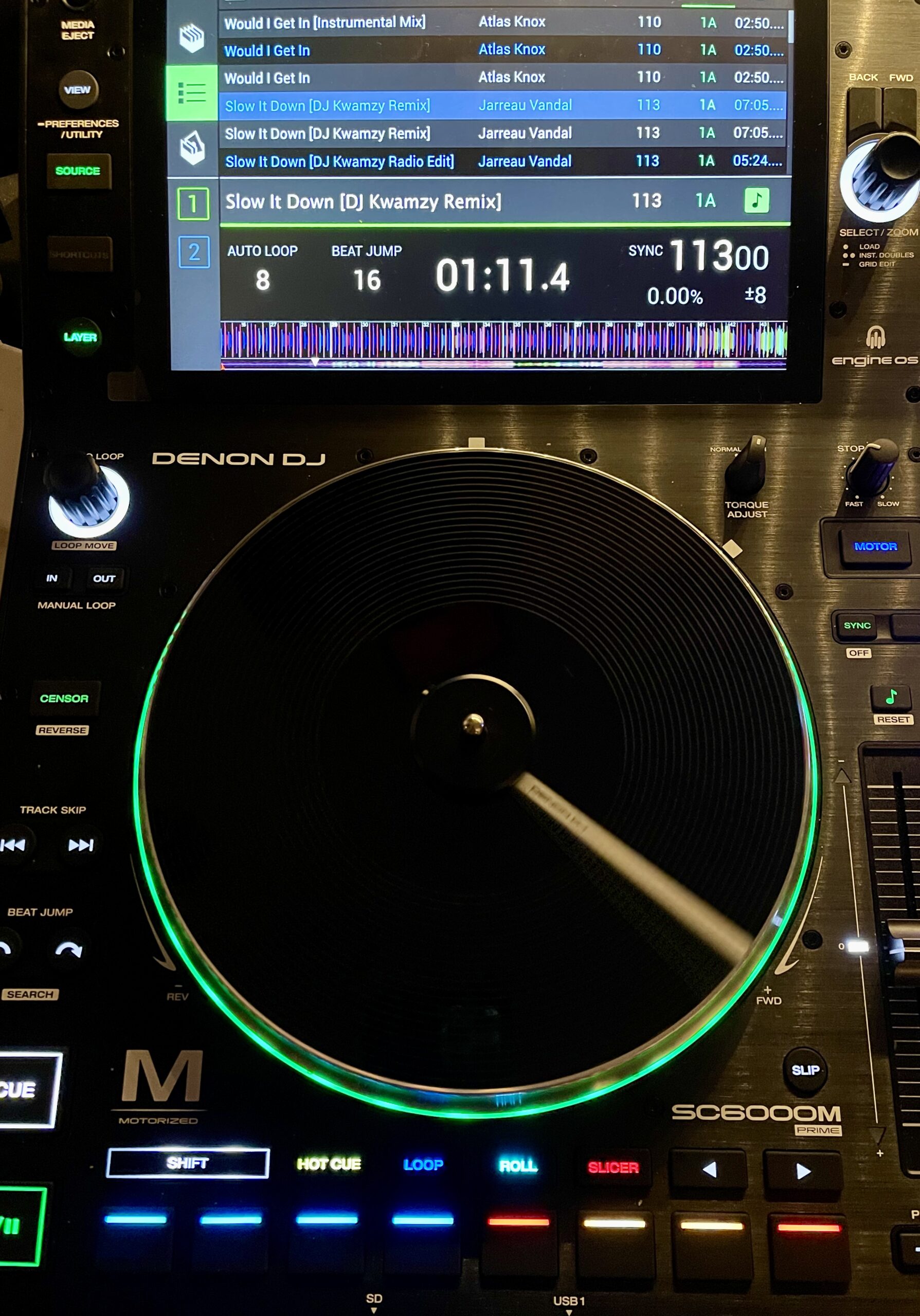
The Pros
Serato support is finally here
Many owners of the SC6000 Prime players have wondered why it took so long to get Serato support. With the Serato DJ Pro 2.4.6 release, it is finally available.
Scrolling waveforms
The Serato integration on the SC5000 line and the Prime 4 was disappointing for many. A minimalist layout and a lack of touchscreen features were common criticisms. But one of the biggest disappointments was the lack of scrolling waveforms. They are finally here for the new SC6000 upgrades, and they are… just ok. The waveforms scroll and react to the software’s zoom settings, but that’s about it. They are small and retain that washed-out color scheme that looks alright on a laptop screen but pale compared to the large, vivid, and bright waveforms found in standalone mode.
The Cons – and improvements we’d like to see
Too basic
There’s not a whole lot to the Serato integration. You get a library section, a now-playing bar with a bit of relevant information, and some small scrolling waveforms. That’s about it. Yes, it’s better than the SC5000 and Prime 4 integration, but not by much. The touch controls are still minimal – all you get is playlist selection and sorting. There is no touch-controlled waveform zoom, no touch-based library scrolling, no additional touch controls like keylock or track loading. You still control most of the software functions via hardware controls or your laptop.
It’s incredibly disappointing to see Serato lag so far behind in their integration of screen-based products. This is especially the case when compared to the robust integration offered by Virtual DJ, which incorporates everything from touch controls to the ability to adjust the program settings from the screen itself.
Flexible Beatgrids

The Pros
Use beatgrids on tempo-drifting or transition tracks
I’m not much of a beatgrid person. At most, I ensure that the first anchor point is correct (something that Serato can often get wrong), and that’s about it. But for those that want or need their beatgrids set, Engine Prime finally brings flexible beatgrids to the table. Flexible beatgrids allow you to set grids even for tracks with fluctuating tempos.
For the most part, the interface for beatgridding dynamic tracks is similar to most other systems. In Engine Prime, you can drop “Anchor” points wherever you want on the track and expand or compress the grids anywhere after the anchor point.
The Cons – and improvements we’d like to see
No way to set beatgrids, anchor points, or BPMs via hardware
I’ve always preferred to set my beatgrids while playing. I usually map out some of the beatgrid editing controls to some custom user pages on my mixers and controllers. On the Denon Prime players, you can only adjust the grid positioning rather than stretching or compressing the grids themselves. This is a feature that is sorely lacking. Even the ability to tap-tempo the BPM or write it in would be an improvement. As is, if Engine OS gets a track BPM wrong, you have to use the Engine Prime app to fix it.
Track preview

The Pros
Listen to tracks without loading to a deck
I never really had a problem with this, but I came from an era where I needed to put a physical piece of vinyl on my turntables to preview tracks. I have seen enough complaints about programs without this feature, so I’m sure many will appreciate this addition.
The Cons – and improvements we’d like to see
Track Preview isn’t available to streaming services
So far, Track Preview is only available to tracks on physical media. Considering how long it takes to download a track, I can understand the omission. Hopefully, it makes its way to streaming eventually.
Beatport and Beatsource Link

Adding to the already-existing Tidal and Soundcloud Go support, Beatport and Beatsource Link are now accessible. While I don’t particularly like using streaming services in general, the Beatport platform has some significant advantages over the competition.
The Pros
DJ-centric service
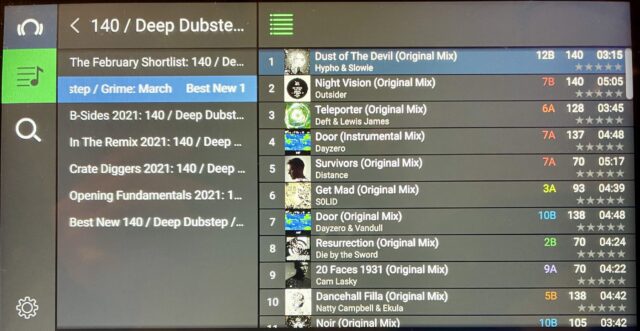
Tidal and Soundcloud Go have some pretty robust libraries, no question. That said, they are still services focused primarily on listening instead of DJing. Beatport (and Beatsource) is a company specifically focused on DJs, and the tracks and setup reflect that. You get DJ-focused edits and a host of remixes instead of mainly album/radio cuts. The service also displays BPM and key information on all their tracks which is incredibly useful.
On top of that, you have access to several DJ-curated playlists to explore specific genres, styles, and charts chosen by real-world DJs and selectors.
The Cons – and improvements we’d like to see
No offline streaming
The much-touted offline system is currently not available to the Denon Prime system. Hopefully, that will be coming in a new update.
No way to sort playlists
While the addition of BPM and key is fantastic, there isn’t a way to sort by that information. This would be a great addition to the Beatport integration.
Overall Improvements Needed
Here are some of the general improvements we’d like to see in the Engine Prime software and OS. Some are issues directly related to 1.6; others are issues or long-requested features that Denon DJ still hasn’t addressed.
The update still seems a bit buggy
In my time running through Engine Prime 1.6, I’ve encountered a fair amount of bugs in the release so far.
I found a lockup that would occur when trying to Instant Double load a Dropbox-loaded track on a linked player. I’ve also seen some odd behavior for beatgrid adjustments with Dropbox-loaded tracks. I experienced some random lockups when switching between streaming services as well. Some required a complete restart of the player.
All in all, I’ve found that while these new streaming and dropbox features are great in theory, there are still some reliability issues when using them. The players seem much more reliable sticking with the tried and true method of exported USB sticks. As is, I would probably save these features as a last resort for things like requests or as a backup in the event of a corrupted USB drive rather than rely on it as my primary source of music.
As more bug reports come in, I do not doubt that Denon DJ will eventually fix these issues. For those using Denon Prime gear at gigs (remember gigs?), I would consider holding off on some of the new features
Still no smart playlists or access to smart playlists in other software
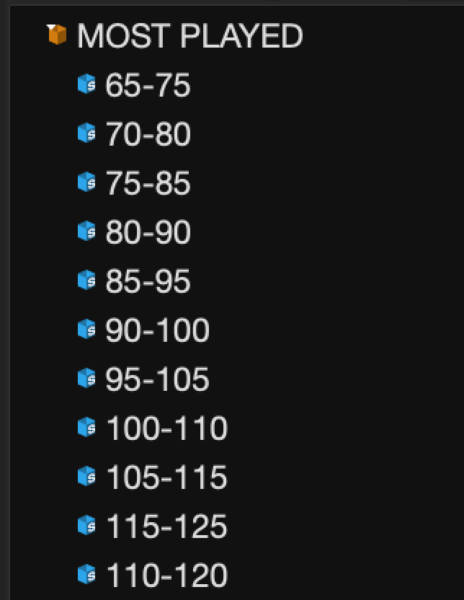
While Engine Prime keeps getting better and better with each update, it still lacks several robust organizational features. One of the glaring omissions is the lack of smart playlists. Features like this are essential to making Engine Prime a full-fledged track management suite instead of just a USB export program. Without better library management tools, Engine Prime will remain playing second fiddle to many programs like iTunes, Rekordbox, or even Serato.
To add to the frustration, Denon Prime cannot access smart playlists from other software like iTunes or Serato. For someone who uses smart playlists extensively, this requires a ton of extra work mirroring my smart playlists or crates into regular crates for Engine Prime to access them.
Cannot search within playlists
I tend to search within playlists a great deal. One of my long-standing organizational methods is creating playlists for specific BPM ranges and then searching within those playlists. In Serato or Rekordbox performance mode, I can easily pare down those playlists by searching for specific criteria I tag on my tracks. On the Denon Prime players, the search function still only looks at my entire collection rather than in specific playlists. Still waiting for someone to step up and make this a possibility on standalone players.
Final Thoughts
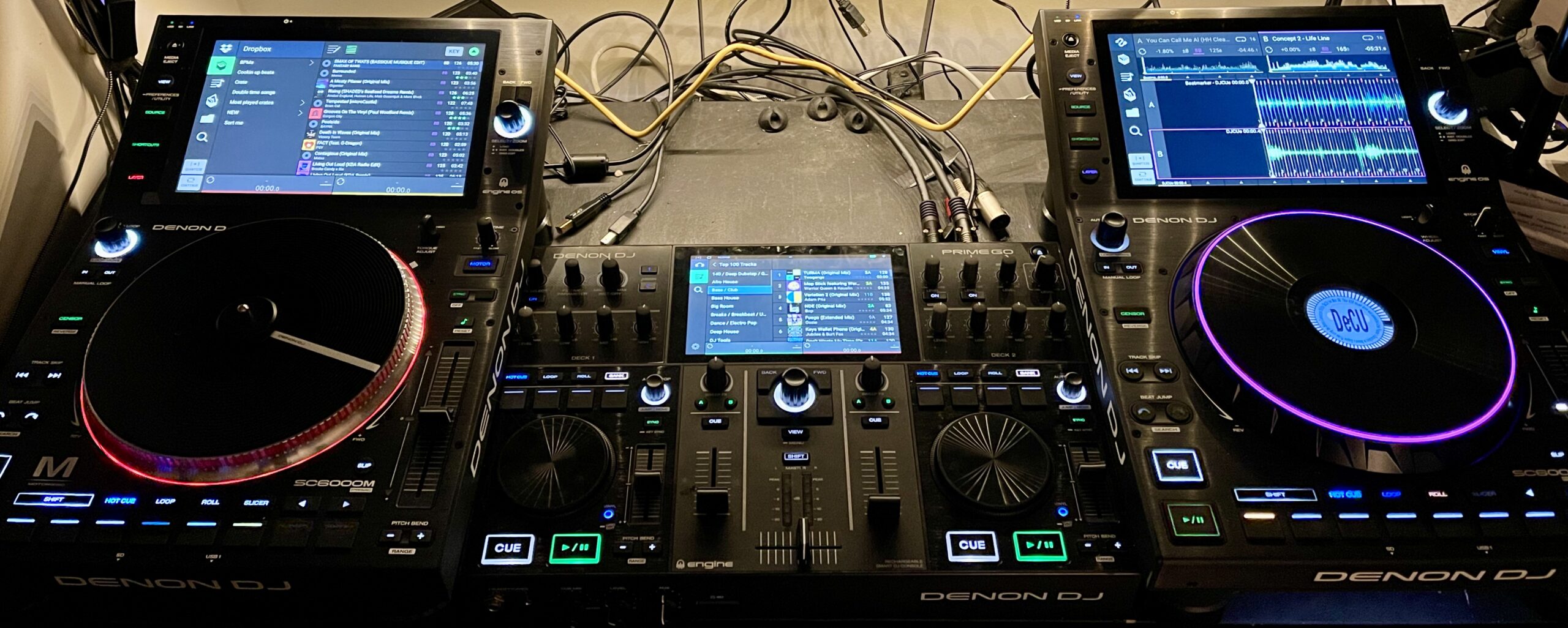
The 1.6 update adds a powerful suite of new features to the Denon Prime and Engine Prime ecosystem. For some, these features might be indispensable or at least incredibly convenient. For others, they may not notice or use any of the new features.
Stability concerns
While many of these new tools are incredibly helpful (I particularly like the dual waveform view when I DJ off a single deck), I found enough quirks in the streaming features to give me a bit of pause. I’ve been using the players on several of my livestreams recently with a combination of USB, Dropbox, streaming services, and Serato. For the most part, things worked pretty smoothly. My biggest issue was the lack of link support for Dropbox streaming. You can avoid this by inserting a spare USB drive into the 2nd player. It’s a bit of a pain having two USB drives, but not the end of the world.
The lockups were more concerning. On more than one occasion, I had total freezes on a deck. All were related to streaming – either via Dropbox or via the services. One was a repeatable bug and easily avoided, but I encountered others by simply switching between streaming services. On the SC6000 players, it wasn’t a huge deal as a quick reset of one would solve the problem. But if I were using a single deck or the Prime Go, it would have meant a stop to the music and an agonizingly slow restart. Fortunately, I only encountered these lockups using the set of SC6000s.
These issues suggest that Dropbox streaming – and streaming in general – might need a bit more work before being ready for prime-time. While undoubtedly cool, I would still stick to a USB drive as my primary source for now – especially for gigs or high-profile streams.
The most feature-rich players on the market
Outside of the streaming problems, 1.6 seems like a bit of a leap for the Engine Prime platform. I particularly liked the dual waveform view. As a long-time Serato user, finally having integration is also much appreciated, even if the implementation is a little underwhelming. Dropbox streaming – while still a little buggy – still has me excited about the potential new features that could be on the way.
While the Engine Prime app still needs some work to get in line with the competition, the updates to Engine OS shine. Even before the 1.6 update, the Denon Prime gear easily led the market in unique and innovative features. The 1.6 upgrades make them easily the most feature-rich standalone players on the market. That said, I feel that 1.6 needs a couple of maintenance updates to fix some bugs to make the much-touted streaming features more reliable.
Try it out for yourself and let us know what you think in the comments below! You can download the latest version of Denon DJ’s Engine Prime software here, and the new OS drivers here.





